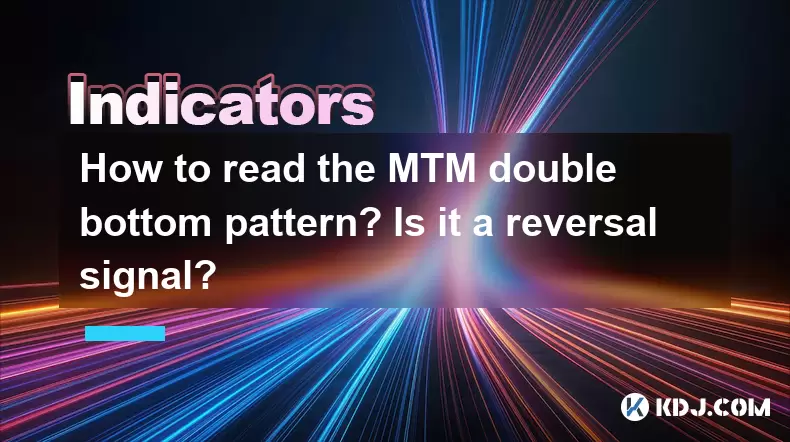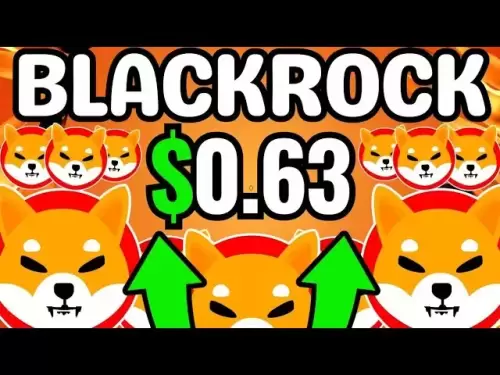-
 Bitcoin
Bitcoin $117700
-0.20% -
 Ethereum
Ethereum $3587
1.19% -
 XRP
XRP $3.422
-0.97% -
 Tether USDt
Tether USDt $1.000
-0.02% -
 BNB
BNB $733.3
0.69% -
 Solana
Solana $177.3
0.36% -
 USDC
USDC $0.9998
-0.01% -
 Dogecoin
Dogecoin $0.2446
1.42% -
 TRON
TRON $0.3183
-2.35% -
 Cardano
Cardano $0.8262
1.07% -
 Hyperliquid
Hyperliquid $44.37
-0.24% -
 Stellar
Stellar $0.4597
-0.87% -
 Sui
Sui $3.841
2.27% -
 Chainlink
Chainlink $18.44
3.20% -
 Hedera
Hedera $0.2658
1.54% -
 Bitcoin Cash
Bitcoin Cash $518.2
0.50% -
 Avalanche
Avalanche $24.38
4.08% -
 Shiba Inu
Shiba Inu $0.00001491
1.30% -
 Litecoin
Litecoin $112.7
10.87% -
 UNUS SED LEO
UNUS SED LEO $8.991
0.16% -
 Toncoin
Toncoin $3.183
-0.13% -
 Polkadot
Polkadot $4.377
3.56% -
 Uniswap
Uniswap $10.16
1.35% -
 Monero
Monero $325.1
2.08% -
 Ethena USDe
Ethena USDe $1.001
-0.01% -
 Bitget Token
Bitget Token $4.922
0.29% -
 Pepe
Pepe $0.00001343
3.62% -
 Dai
Dai $0.9999
-0.01% -
 Aave
Aave $319.5
-0.89% -
 Bittensor
Bittensor $416.3
1.23%
How to read the MTM double bottom pattern? Is it a reversal signal?
The MTM double bottom pattern, resembling a "W," signals a potential bullish reversal when the price breaks above the neckline with increased volume.
May 23, 2025 at 03:21 am

The MTM double bottom pattern is a technical analysis tool used by cryptocurrency traders to identify potential reversal points in a market trend. This pattern is particularly significant because it can signal a shift from a bearish to a bullish market, providing traders with opportunities to enter long positions. To understand and effectively read the MTM double bottom pattern, it is crucial to recognize its formation and the conditions that validate it as a reversal signal.
Formation of the MTM Double Bottom Pattern
The MTM double bottom pattern forms when the price of a cryptocurrency hits a low point, rebounds, and then falls back to the same low point before eventually rising again. This pattern resembles the letter "W" on a price chart. The key elements of the MTM double bottom pattern include:
- The first low: This is the initial point where the price hits a bottom.
- The peak: After the first low, the price rises to a peak, which is also known as the neckline.
- The second low: The price then falls again to the same level as the first low, forming the second bottom.
- The breakout: Finally, the price breaks above the neckline, confirming the pattern.
To effectively read this pattern, traders should focus on the symmetry and the volume associated with each part of the formation. The volume should be higher during the breakout to confirm the strength of the reversal.
Identifying the MTM Double Bottom as a Reversal Signal
The MTM double bottom pattern is considered a strong reversal signal when certain conditions are met. These conditions help traders determine the reliability of the pattern and the likelihood of a trend reversal. Key conditions to look for include:
- Clear and distinct lows: The two lows should be at nearly the same price level, indicating strong support.
- Volume confirmation: The volume should increase as the price breaks above the neckline, signaling strong buying pressure.
- Time frame: The pattern should form over a significant period, typically weeks or months, to be considered valid.
- Price action: The price should show a clear and sustained move above the neckline after the second low.
When these conditions are met, the MTM double bottom pattern is a reliable indicator of a potential bullish reversal.
Steps to Trade the MTM Double Bottom Pattern
To trade the MTM double bottom pattern effectively, follow these detailed steps:
- Identify the pattern: Look for the formation of two distinct lows at approximately the same price level, followed by a peak (neckline).
- Confirm the pattern: Wait for the price to break above the neckline with increased volume to confirm the pattern.
- Set entry point: Enter a long position once the price breaks above the neckline. A conservative entry point is just above the neckline, while a more aggressive entry can be made as the price approaches the neckline.
- Set stop loss: Place a stop loss order just below the second low to manage risk. This ensures that if the pattern fails, losses are minimized.
- Set take profit: Calculate the potential price target by measuring the distance from the neckline to the lowest point of the pattern and adding it to the breakout point. This gives a conservative target for taking profits.
Analyzing the MTM Double Bottom Pattern with Indicators
To enhance the reliability of the MTM double bottom pattern, traders often use additional technical indicators. Some commonly used indicators include:
- Moving Averages: A bullish crossover of short-term moving averages over long-term moving averages can confirm the strength of the reversal.
- Relative Strength Index (RSI): An RSI that moves above 50 from an oversold condition can signal a strengthening bullish momentum.
- MACD: A bullish crossover of the MACD line above the signal line, accompanied by a histogram that moves from negative to positive, can further validate the reversal signal.
By combining the MTM double bottom pattern with these indicators, traders can increase their confidence in the potential reversal.
Common Pitfalls and How to Avoid Them
While the MTM double bottom pattern can be a powerful tool, there are common pitfalls that traders should be aware of and avoid:
- False breakouts: Sometimes, the price may briefly break above the neckline but then fall back below it. To avoid this, wait for a confirmed breakout with significant volume.
- Ignoring volume: Failing to consider the volume during the breakout can lead to false signals. Always ensure that the volume is higher during the breakout.
- Overtrading: Entering trades too frequently based on unconfirmed patterns can lead to losses. Be patient and wait for all conditions to be met before entering a trade.
By understanding these pitfalls and taking steps to avoid them, traders can improve their success rate when using the MTM double bottom pattern.
Frequently Asked Questions
Q: Can the MTM double bottom pattern be used in all time frames?
A: While the MTM double bottom pattern can be identified in various time frames, it is most reliable when it forms over longer periods, such as weeks or months. Shorter time frames may result in more false signals due to increased market noise.
Q: Is it necessary to use additional indicators with the MTM double bottom pattern?
A: While not strictly necessary, using additional indicators can enhance the reliability of the pattern. Indicators like moving averages, RSI, and MACD can provide further confirmation of the potential reversal.
Q: How can traders differentiate between a valid MTM double bottom and a similar-looking pattern?
A: To differentiate a valid MTM double bottom from a similar-looking pattern, focus on the following: the two lows should be at nearly the same price level, the breakout should be accompanied by higher volume, and the pattern should form over a significant time frame. These elements help confirm the pattern's validity.
Q: What should traders do if the MTM double bottom pattern fails?
A: If the MTM double bottom pattern fails, traders should exit their positions to minimize losses. It is crucial to have a stop loss order in place just below the second low to manage risk effectively.
Disclaimer:info@kdj.com
The information provided is not trading advice. kdj.com does not assume any responsibility for any investments made based on the information provided in this article. Cryptocurrencies are highly volatile and it is highly recommended that you invest with caution after thorough research!
If you believe that the content used on this website infringes your copyright, please contact us immediately (info@kdj.com) and we will delete it promptly.
- XRP Mining, the GENIUS Act, and Coin Holders: A New Era?
- 2025-07-20 06:30:12
- Arctic Pablo Coin: Navigating the Icebound Estates Presale and Token Burn Strategy
- 2025-07-20 06:30:12
- Arctic Pablo Coin's Myth-Themed Presale: Icebound Estates and Beyond!
- 2025-07-20 06:50:12
- Snorter Token's Presale Success: Riding the GENIUS Act Wave in the Crypto World
- 2025-07-20 06:50:12
- PENGU Token's Breakout Momentum: Riding the Wave in a Bearish Market
- 2025-07-20 07:10:12
- Crypto's 100x Hunt in 2025: Beyond the Hype
- 2025-07-20 07:10:12
Related knowledge

Advanced RSI strategies for crypto
Jul 13,2025 at 11:01am
Understanding the Basics of RSI in Cryptocurrency TradingThe Relative Strength Index (RSI) is a momentum oscillator used to measure the speed and chan...

Crypto RSI for day trading
Jul 12,2025 at 11:14am
Understanding RSI in the Context of Cryptocurrency TradingThe Relative Strength Index (RSI) is a momentum oscillator used to measure the speed and cha...

Crypto RSI for scalping
Jul 12,2025 at 11:00pm
Understanding RSI in the Context of Crypto TradingThe Relative Strength Index (RSI) is a momentum oscillator widely used by traders to measure the spe...

What does an RSI of 30 mean in crypto
Jul 15,2025 at 07:07pm
Understanding RSI in Cryptocurrency TradingRelative Strength Index (RSI) is a momentum oscillator widely used in cryptocurrency trading to measure the...

What does an RSI of 70 mean in crypto
Jul 13,2025 at 06:07pm
Understanding the RSI Indicator in Cryptocurrency TradingThe Relative Strength Index (RSI) is a widely used technical analysis tool that helps traders...

Does RSI work in a bear market for crypto
Jul 16,2025 at 01:36pm
Understanding RSI in Cryptocurrency TradingThe Relative Strength Index (RSI) is a momentum oscillator used by traders to measure the speed and change ...

Advanced RSI strategies for crypto
Jul 13,2025 at 11:01am
Understanding the Basics of RSI in Cryptocurrency TradingThe Relative Strength Index (RSI) is a momentum oscillator used to measure the speed and chan...

Crypto RSI for day trading
Jul 12,2025 at 11:14am
Understanding RSI in the Context of Cryptocurrency TradingThe Relative Strength Index (RSI) is a momentum oscillator used to measure the speed and cha...

Crypto RSI for scalping
Jul 12,2025 at 11:00pm
Understanding RSI in the Context of Crypto TradingThe Relative Strength Index (RSI) is a momentum oscillator widely used by traders to measure the spe...

What does an RSI of 30 mean in crypto
Jul 15,2025 at 07:07pm
Understanding RSI in Cryptocurrency TradingRelative Strength Index (RSI) is a momentum oscillator widely used in cryptocurrency trading to measure the...

What does an RSI of 70 mean in crypto
Jul 13,2025 at 06:07pm
Understanding the RSI Indicator in Cryptocurrency TradingThe Relative Strength Index (RSI) is a widely used technical analysis tool that helps traders...

Does RSI work in a bear market for crypto
Jul 16,2025 at 01:36pm
Understanding RSI in Cryptocurrency TradingThe Relative Strength Index (RSI) is a momentum oscillator used by traders to measure the speed and change ...
See all articles

























































































